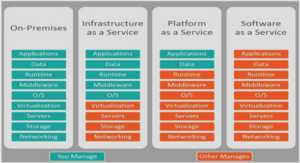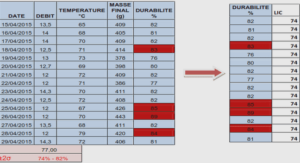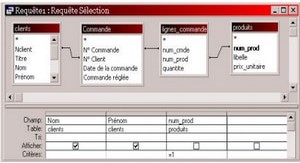Microsoft Access tutorial and exercises, tutoriel & guide de travaux pratiques en pdf.
Subforms
Non-synchronized forms
In this section, you will delete the link fields shown in Figure 7.8 in order to explore some of the problems associated with non-synchronized forms.
• Return to form design mode and delete the link fields (highlight the text and press the Delete key).
• View the form. Note that all records in the Sections table (not just those associated with a particular course) are shown.
• Attempt to add a new section to COMM 290 as shown in Figure 7.10.
• Re-establish the correct link fields and save the form.
Aesthetic refinements
In this section, you will modify the properties of several form objects
(including the properties of the form itself) to make your form more attractive and easier to use.
In Figure 7.11, the basic form created in the previous sections is shown and a number of shortcomings are identified.
Changing the form’s caption
• Select the form as shown in Figure 7.12.
• Change its Caption property to “Courses and Sections”.
Eliminating unwanted scroll bars and navigation buttons
Scroll bars and navigation buttons are also formlevel properties.
However, in this case, you need to modify the properties of the subform.
• To quickly open the subform in design mode, double-click the subform control when viewing the main form in design mode (this takes some practice)
1. Microsoft Access tutorial
1.1 Introduction: What is Access?
1.1.1 The many faces of Access
1.1.2 What is in an Access database file?
1.2 Learning objectives
1.3 Tutorial exercises
1.3.1 Starting Access
1.3.2 Creating a new database
1.3.3 Opening an existing database
1.3.4 Importing data from other applications
1.3.5 Getting help
1.3.6 Compacting your database
1.4 Discussion
1.4.1 The database file in Access
1.4.2 Compacting a database
1.4.3 Renaming a database
1.4.4 Developing applications in Access
1.4.5 Use of linked tables
1.5 Application to the assignment
2. Tables
2.1 Introduction: The importance of good table design
2.2 Learning objectives
2.3 Tutorial exercises
2.3.1 Datasheet basics
2.3.2 Creating a new table
2.3.3 Specifying the primary key
2.3.4 Setting field properties
2.3.5 Using the input mask wizard
2.4 Discussion
2.4.1 Key terminology
2.4.2 Fields and field properties
2.4.2.1 Field names
2.4.2.2 Data types
2.4.2.3 “Disappearing” numbers in autonumber fields
2.4.2.4 Input masks
2.4.2.5 Input masks and literal values
2.5 Application to the assignment
3. Relationships
3.1 Introduction: The advantage of using tables and relationships
3.1.1 “Normalized” table design
3.2 Learning objectives
3.3 Tutorial exercises
3.3.1 Creating relationships between tables
3.3.2 Editing and deleting relationships
3.4 Discussion
3.4.1 One-to-many relationships
3.4.2 Referential integrity
3.5 Application to the assignment
4. Basic Queries Using QBE
4.1 Introduction: Using queries to get the information you need
4.2 Learning objectives
4.3 Tutorial exercises
4.3.1 Creating a query
4.3.2 Five basic query operations
4.3.2.1 Projection
4.3.2.2 Sorting
4.3.2.3 Selection
4.3.2.4 Complex selection criteria
4.3.2.5 Joining
4.3.3 Creating calculated fields
4.3.3.1 Refining the calculated field
4.3.3.2 A more complex calculated field
4.3.4 Errors in queries
4.4 Discussion
4.4.1 Naming conventions for database objects
4.4.2 The ampersand (&) operator
4.4.3 Using queries to populate tables on the “many” side of a relationship
4.4.4 Non-updatable recordsets
4.5 Application to the assignment
5. Basic Queries using SQL
5.1 Introduction: The difference between QBE and SQL
5.2 Learning objectives
5.3 Tutorial exercises
5.3.1 Basic SQL queries
5.3.2 Complex WHERE clauses
5.3.3 Join queries
5.4 Discussion
6. Form Fundamentals
6.1 Introduction: Using forms as the core of an application
6.2 Learning objectives
6.3 Tutorial exercises
6.3.1 Creating a form from scratch
6.3.1.1 Adding bound text boxes
6.3.1.2 Using a field’s properties to protect its contents
6.3.1.3 Adding an unbound text box
6.3.1.4 Binding an unbound text box to a field
6.3.2 Creating a single-column form using the wizard
6.4 Discussion
6.4.1 Columnar versus tabular versus datasheet forms
6.5 Application to the assignment
7. Subforms
7.1 Introduction: The advantages of forms within forms
7.2 Learning objectives
7.3 Tutorial exercises
7.3.1 Creating the main form
7.3.2 Creating the subform
7.3.3 Linking the main form and subform
7.3.4 Linking forms and subforms manually
7.3.5 Non-synchronized forms
7.3.6 Aesthetic refinements
7.3.6.1 Changing the form’s caption
7.3.6.2 Eliminating unwanted scroll bars and navigation buttons
7.4 Application to the assignment
8. Combo Box Controls
8.1 Introduction: What is a combo box?
8.2 Learning objectives
8.3 Tutorial exercises
8.3.1 Creating a bound combo box
8.3.2 Filling in the combo box properties
8.3.3 A combo box based on another table or query
8.3.3.1 Showing more than one field in the combo box
8.3.3.2 Hiding the key field
8.3.3.3 Changing the order of items in the combo box
8.3.4 Changing a form’s tab order
8.4 Discussion
8.4.1 Why you should never use a combo box for a non-concatenated key.
8.4.2 Controls and widgets
8.5 Application to the assignment
9. Advanced Forms
9.1 Introduction: Using calculated controls on forms
9.2 Learning objectives
9.3 Tutorial exercises
9.3.1 Creating calculated controls on forms
9.3.2 Showing a total on the main form
9.3.2.1 Calculating the aggregate function on the subform
9.3.2.2 Hiding the text box on the subform
9.4 Discussion
9.5 Application to the assignment
……
Access tutorial learn MS Access with example (1,81 MO) (Cours PDF)




